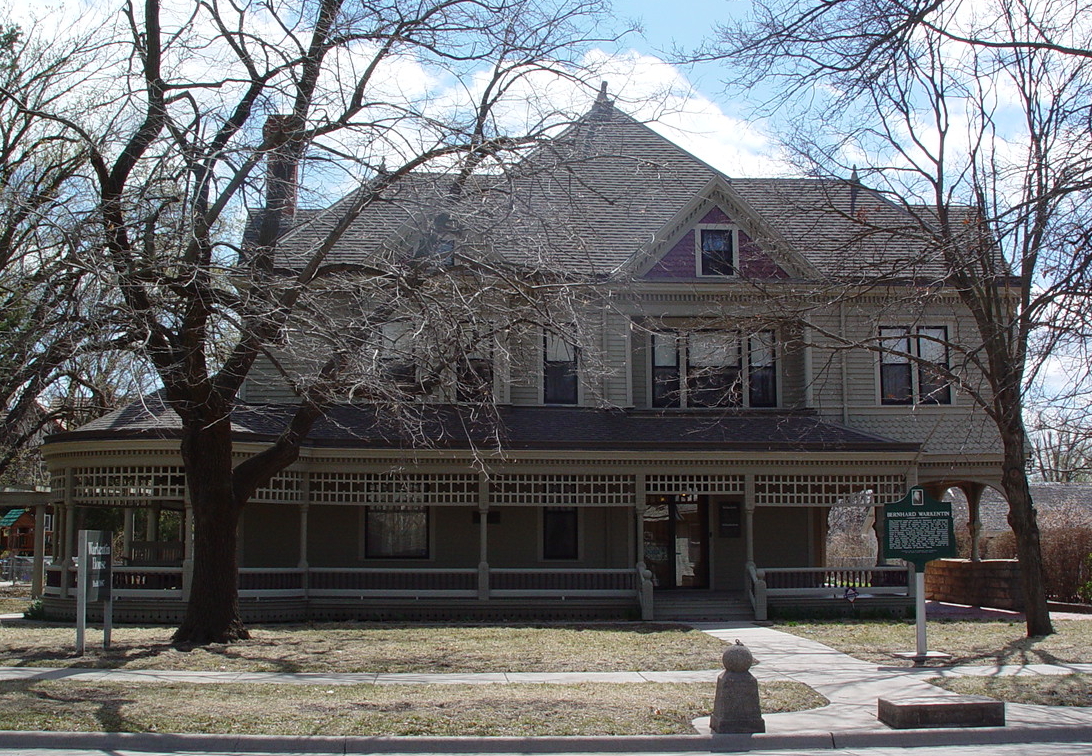|
Polingaysi Qöyawayma
Polingaysi Qöyawayma ( ; 1892 – December 6, 1990), also known as Elizabeth Q. White, was a Hopi educator, writer, and potter. Biography Born to parents Fred (of the Kachina Clan) and Sevenka (of the Coyote Clan), Polingaysi Qöyawayma grew up in Oraibi, Arizona, Oraibi, a village on Arizona's Hopi Reservation. Her given name means "butterfly sitting among the flowers in the breeze". Qöyawayma's father worked for Mennonite missionary Henry Voth, who built a school in Oraibi and attempted to win converts to Christianity. Many in the village saw Voth's efforts to enforce attendance as heavy-handed, and this caused a rift between Hopis who opposed and supported the school. In 1906, Qöyawayma joined a group of students traveling to study at the Sherman Indian High School, Sherman Institute in Riverside, California. In her four years at the school, she lived with a teacher's family, learning English and converting to Christianity. After returning home to Oraibi, she had difficul ... [...More Info...] [...Related Items...] OR: [Wikipedia] [Google] [Baidu] |
Oraibi, Arizona
Oraibi, also referred to as Old Oraibi, is a Hopi village in Navajo County, Arizona, Navajo County, Arizona, United States, in the northeastern part of the state. Known as Orayvi by the native inhabitants, it is on Third Mesa on the Hopi Reservation near Kykotsmovi Village, Arizona, Kykotsmovi Village. History Oraibi was founded sometime before the year 1100 AD, making it possibly the oldest continuously inhabited settlement in the United States. Archeologists speculate that a series of severe droughts in the late 13th century forced the Hopi to abandon several smaller villages in the region and consolidate within a few population centers, Oraibi being one of them. As Oraibi's population grew considerably, it became the most influential of the Hopi settlements. By 1890, the village was estimated to have a population of 905, about half of the 1,824 estimated to be living in all of the Hopi settlements at the time. Oraibi remained unknown to European explorers until about 1540 ... [...More Info...] [...Related Items...] OR: [Wikipedia] [Google] [Baidu] |
Newton, Kansas
Newton is a city in and the county seat of Harvey County, Kansas, United States. As of the 2020 United States census, 2020 census, the population of the city was 18,602. Newton is located north of Wichita, Kansas, Wichita. The city of North Newton, Kansas, North Newton. located immediately north, exists as a separate political entity. Newton is located at the intersection of Interstate 135, U.S. Route 50 in Kansas, U.S. Route 50, and U.S. Route 81 in Kansas, U.S. Route 81 highways. History 19th century For millennia, the land now known as Kansas was inhabited by Native Americans in the United States, Native Americans. In 1803, most of History of Kansas, modern Kansas was secured by the United States as part of the Louisiana Purchase. In 1854, the Kansas Territory was organized, then in 1861, Kansas became the 34th U.S. state. In 1872, Harvey County was founded. In 1871, the Atchison, Topeka and Santa Fe Railway extended a main line from Emporia, Kansas, Emporia westwar ... [...More Info...] [...Related Items...] OR: [Wikipedia] [Google] [Baidu] |
Los Angeles Times
The ''Los Angeles Times'' is an American Newspaper#Daily, daily newspaper that began publishing in Los Angeles, California, in 1881. Based in the Greater Los Angeles city of El Segundo, California, El Segundo since 2018, it is the List of newspapers in the United States, sixth-largest newspaper in the U.S. and the largest in the Western United States with a print circulation of 118,760. It has 500,000 online subscribers, the fifth-largest among U.S. newspapers. Owned by Patrick Soon-Shiong and published by California Times, the paper has won over 40 Pulitzer Prizes since its founding. In the 19th century, the paper developed a reputation for civic boosterism and opposition to Trade union, labor unions, the latter of which led to the Los Angeles Times bombing, bombing of its headquarters in 1910. The paper's profile grew substantially in the 1960s under publisher Otis Chandler, who adopted a more national focus. As with other regional newspapers in California and the United Sta ... [...More Info...] [...Related Items...] OR: [Wikipedia] [Google] [Baidu] |
Ishi In Two Worlds
''Ishi in Two Worlds'' is a biographical account of Ishi, the last known member of the Yahi Native American people. Written by American author Theodora Kroeber, it was first published in 1961. Ishi had been found alone and starving outside Oroville, California, in 1911. He was befriended by the anthropologists Alfred Louis Kroeber and Thomas Waterman, who took him to the Museum of Anthropology in San Francisco. There, he was studied by the anthropologists, before his death in 1916. Theodora Kroeber married Alfred Kroeber in 1926. Though she had never met Ishi, she decided to write a biography of him because her husband did not feel able to do so. ''Ishi in Two Worlds'' was published in 1961, after Theodora Kroeber had spent two years studying the sources about him. It sold widely, remained in print for many years, and was translated into more than a dozen languages. The book was twice adapted into film, in 1978 (as '' Ishi: The Last of His Tribe'') and 1992 (as '' The Last o ... [...More Info...] [...Related Items...] OR: [Wikipedia] [Google] [Baidu] |
Robert Kirsch
Robert R. Kirsch (October 18, 1922 – August 16, 1980) was an American literary critic and author. He was the literary editor of ''The Los Angeles Times'' for more than two decades. Early life Robert R. Kirsch was born on October 18, 1922, on Coney Island in Brooklyn, New York City. He moved out of Coney Island at the age of 17. He had two sons, Paul Kirsch, and Jonathan Kirsch, who is a renowned lawyer. He also later had a daughter named Maria Kirsch in his second marriage. Career Kirsch joined ''The Los Angeles Times'', where he was the literary editor for 23 years. Over the course of his career, he wrote "thousands of columns, book reviews, and essays." He was one of the first critics to praise the works of Joseph Wambaugh and Tom Sanchez. Kirsch authored several books about California and Las Vegas. He used the pennames of Robert Dundee and Robert Bancroft. Death and legacy Kirsch died of cancer on August 16, 1980, in Santa Barbara, California. A public funeral was h ... [...More Info...] [...Related Items...] OR: [Wikipedia] [Google] [Baidu] |
University Of New Mexico Press
The University of New Mexico Press (UNMP) is a university press at the University of New Mexico. It was founded in 1929 and published pamphlets for the university in its early years before expanding into quarterlies and books. Its administrative offices are in the Office of Research (Building 26), on the campus of UNM in Albuquerque. The University of New Mexico Press specializes in scholarly and trade books on subjects including Southwestern and Western American history and literature, archaeology and anthropology, Latin American and border studies, Native American studies, travel and recreation, and children's books. UNM Press publishes the Dialagos Series in Latin American Studies, the Mary Burritt Christiansen Poetry Series, and the Barbara Guth Worlds of Wonder Science Series for Young Readers. Domestic distribution for the press is currently provided by the University of North Carolina Press's Longleaf Services. The early years On June 1, 1929, the Board of Regents o ... [...More Info...] [...Related Items...] OR: [Wikipedia] [Google] [Baidu] |
The Arizona Republic
''The Arizona Republic'' is an American daily newspaper published in Phoenix. Circulated throughout Arizona, it is the state's largest newspaper. Since 2000, it has been owned by the Gannett newspaper chain. History Early years The newspaper was founded May 19, 1890, under the name ''The Arizona Republican'', by Lewis Wolfley, Clark Churchill, John A. Black, Robert H. Paul, Royal A. Johnson, and Dr. L. C. Toney. Six years later, they would sell the paper to “an experienced newspaperman” from Washington, DC, Charles C. Randolph. On April 28, 1909, the newspaper notified its readers that local businessmen S. W. Higley and Sims Ely purchased the newspaper from George W. Vickers, and would run the paper as president and general manager, respectively. They co-owned the newspaper until December 1911, Higley purchased Ely’s interest in the paper. S. W. Higley would hold sole ownership of the Arizona Republican, serving as president and manager until its sale to Dwight B ... [...More Info...] [...Related Items...] OR: [Wikipedia] [Google] [Baidu] |
Bureau Of Indian Affairs
The Bureau of Indian Affairs (BIA), also known as Indian Affairs (IA), is a United States List of United States federal agencies, federal agency within the U.S. Department of the Interior, Department of the Interior. It is responsible for implementing Federal law (United States), federal laws and policies related to Native Americans in the United States, Native Americans and Alaska Natives, and administering and managing over of Indian reservation, reservations Trust law, held in trust by the Federal government of the United States, U.S. federal government for List of federally recognized tribes, indigenous tribes. It renders services to roughly 2 million indigenous Americans across 574 federally recognized tribes. The BIA is governed by a director and overseen by the assistant secretary for Indian affairs, who answers to the United States Secretary of the Interior, secretary of the interior. The BIA works with Tribal sovereignty in the United States, tribal governments to h ... [...More Info...] [...Related Items...] OR: [Wikipedia] [Google] [Baidu] |
Southwest Art
''Southwest Art'' is a magazine published by Peak Media Properties that specializes in fine art depicting art of the American Southwest. History and profile ''Southwest Art'' was first published in May 1971. Initially, the magazine was based in Houston, Texas. It first dealt with arts in Houston and then its coverage expanded to the broader southwestern United States. The magazine mainly features paintings and textiles, but also digital and other modern creative endeavors. It mostly covers articles about the artists, galleries, and collectors. Sister publications include ''The Collector’s Guide'' focusing on the art and galleries of New Mexico New Mexico is a state in the Southwestern United States, Southwestern region of the United States. It is one of the Mountain States of the southern Rocky Mountains, sharing the Four Corners region with Utah, Colorado, and Arizona. It also .... References External links''Southwest Art'' home page 1971 establishments in Te ... [...More Info...] [...Related Items...] OR: [Wikipedia] [Google] [Baidu] |
Navajo
The Navajo or Diné are an Indigenous people of the Southwestern United States. Their traditional language is Diné bizaad, a Southern Athabascan language. The states with the largest Diné populations are Arizona (140,263) and New Mexico (108,305). More than three-quarters of the Diné population resides in these two states.American Factfinder The overwhelming majority of Diné are enrolled in the . Some Diné are enrolled in th ... [...More Info...] [...Related Items...] OR: [Wikipedia] [Google] [Baidu] |
Hopi Language
Hopi (Hopi: ) is a Uto-Aztecan language spoken by the Hopi people (a Puebloan group) of northeastern Arizona, United States. The use of Hopi has gradually declined over the course of the 20th century. In 1990, it was estimated that more than 5,000 people could speak Hopi as a native language (approximately 75% of the population), but only 40 of them were monolingual in Hopi. The 1998 language survey of 200 Hopi people showed that 100% of Hopi elders (60 years or older) were fluent, but fluency in adults (40–59) was only 84%, 50% in young adults (20–39), and 5% in children (2–19). Despite the apparent decline, Hopi and Navajo both are supported by bilingual education programs in Arizona, and children acquire the Native American languages as their first language. More recently, Hopi language programs for children on the reservation have been implemented. Teaching and language revitalization efforts The Hopi language has been part of several language revitalization pro ... [...More Info...] [...Related Items...] OR: [Wikipedia] [Google] [Baidu] |
Bilingual Education
In bilingual education, students are taught in two (or more) languages. It is distinct from learning a second language as a subject because both languages are used for instruction in different content areas like math, science, and history. The time spent in each language depends on the model. For example, some models focus on providing education in both languages throughout a student's entire education while others gradually transition to education in only one language. The ultimate goal of bilingual education is fluency and literacy in both languages through a variety of strategies such as translanguaging and recasting. Bilingual education program models There are several different ways to categorize bilingual education models, one of the most common approaches being to separate programs by their end goal. This is the approach used below, though it is not the only possible approach. For a more comprehensive review of different approaches to bilingual education worldwide see bil ... [...More Info...] [...Related Items...] OR: [Wikipedia] [Google] [Baidu] |







